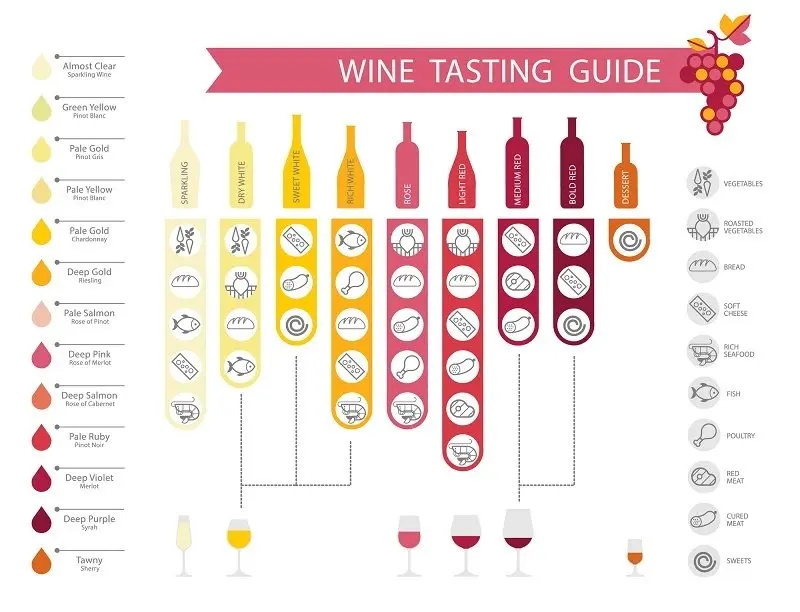It is difficult to say unequivocally what is better to eat wine. An important role here is played by the traditions of combining wines and dishes in different countries, they differ markedly. We will focus on several principles that allow you to choose an appetizer that complements the taste of wine, but does not interrupt it. We will separately consider options that have proven themselves in Russia.
Universal rule: wines with a complex aromatic bouquet and rich taste are served with the simplest appetizer. The opposite is also true: it is customary to drink gourmet dishes with simple (ordinary or table) wine, which contributes to the rapid absorption of food. There are only three foods that have almost no effect on the taste of wine: white bread, hard cheeses without spices, and fruit.
At the same time, I advise you not to forget about products that absolutely do not combine with wines. These are nuts, vinegar and cigarettes. Vinegar dulls the taste buds for a while, and nuts knit the tongue, the different zones of which are responsible for the perception of taste. Wine and cigarettes (cigars) interrupt each other’s aroma. Between them, be sure to pause for several hours.
Experienced restaurateurs select a snack, focusing on the type of wine. Expensive white dry wines are best served with oysters, boiled crayfish, red or black caviar, as well as any second fish dishes. White table wines are paired with mussels, snails, fried fish, cold pork and veal.
Dry red wines are served with fried meats, delicate types of cheeses and fish in sauce. Fortified red wines containing over 12% alcohol are good to drink with barbecue, spicy dishes and soups.
Under table semi-sweet and semi-dry wines (red and white), you can put fried meat, sausages, vegetables, mushrooms, game dishes, casseroles, rolls and puddings on the table. From vegetables, I advise you to choose cauliflower, asparagus or artichokes.
Rosé dry wine can be combined with good smoked sausages, fried fish, white meat, grilled chicken and soft cheeses.
Dry champagne is suitable for any dishes, usually a meal begins with it. Semi-dry, semi-sweet champagne and liqueur wines are served only for dessert with tea, coffee, sweet pastries, sweets, fruits.

PS Most producers list on the label a list of dishes that go with their wine. I advise you to adhere to these recommendations, even if they contradict generally accepted norms. A wide range and variety of flavors do not allow us to develop rules that work in all situations. Often the label method works better than others.









